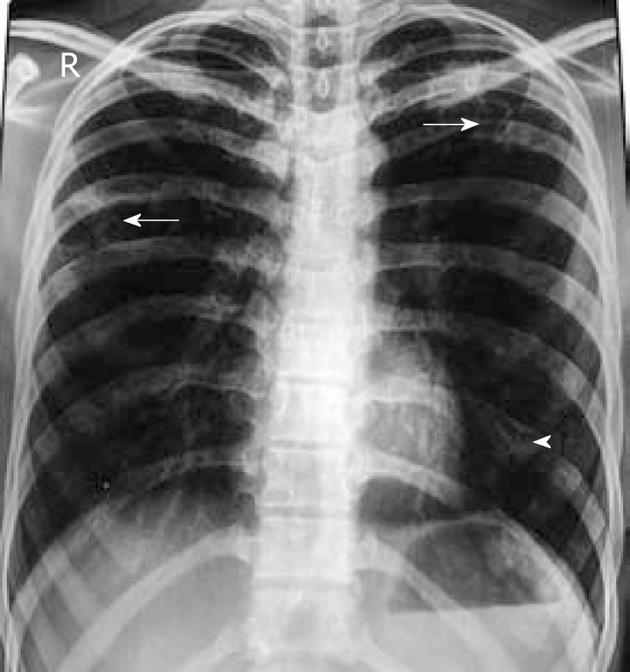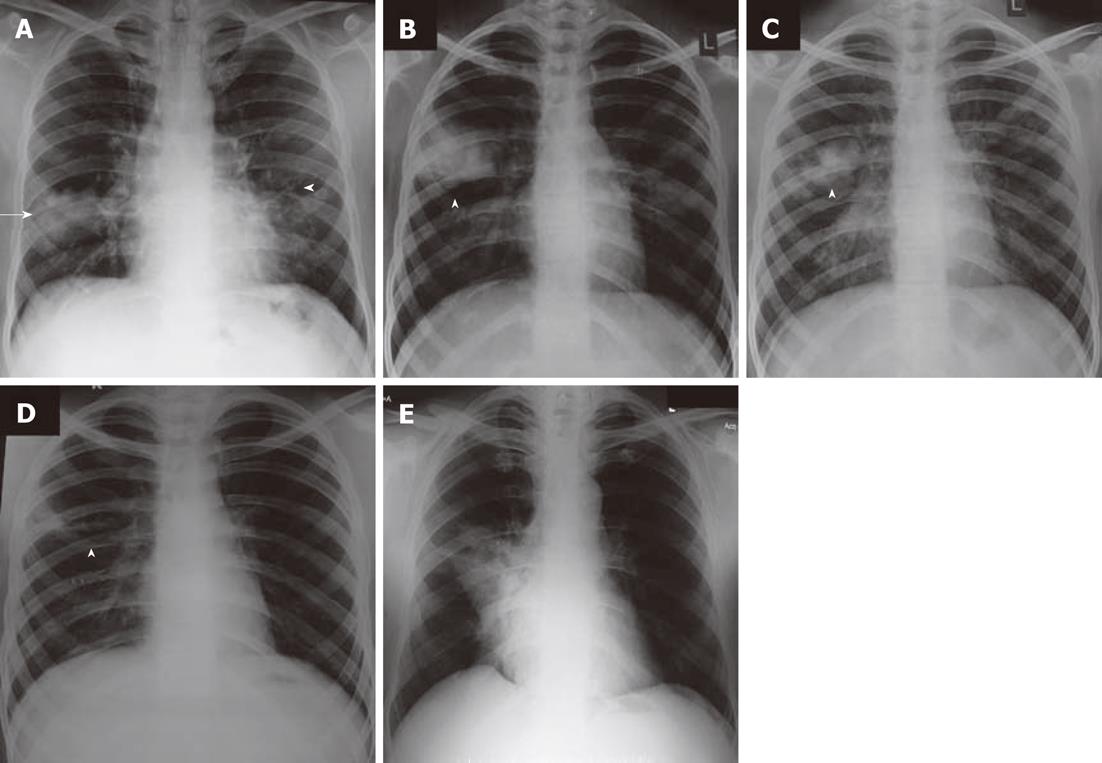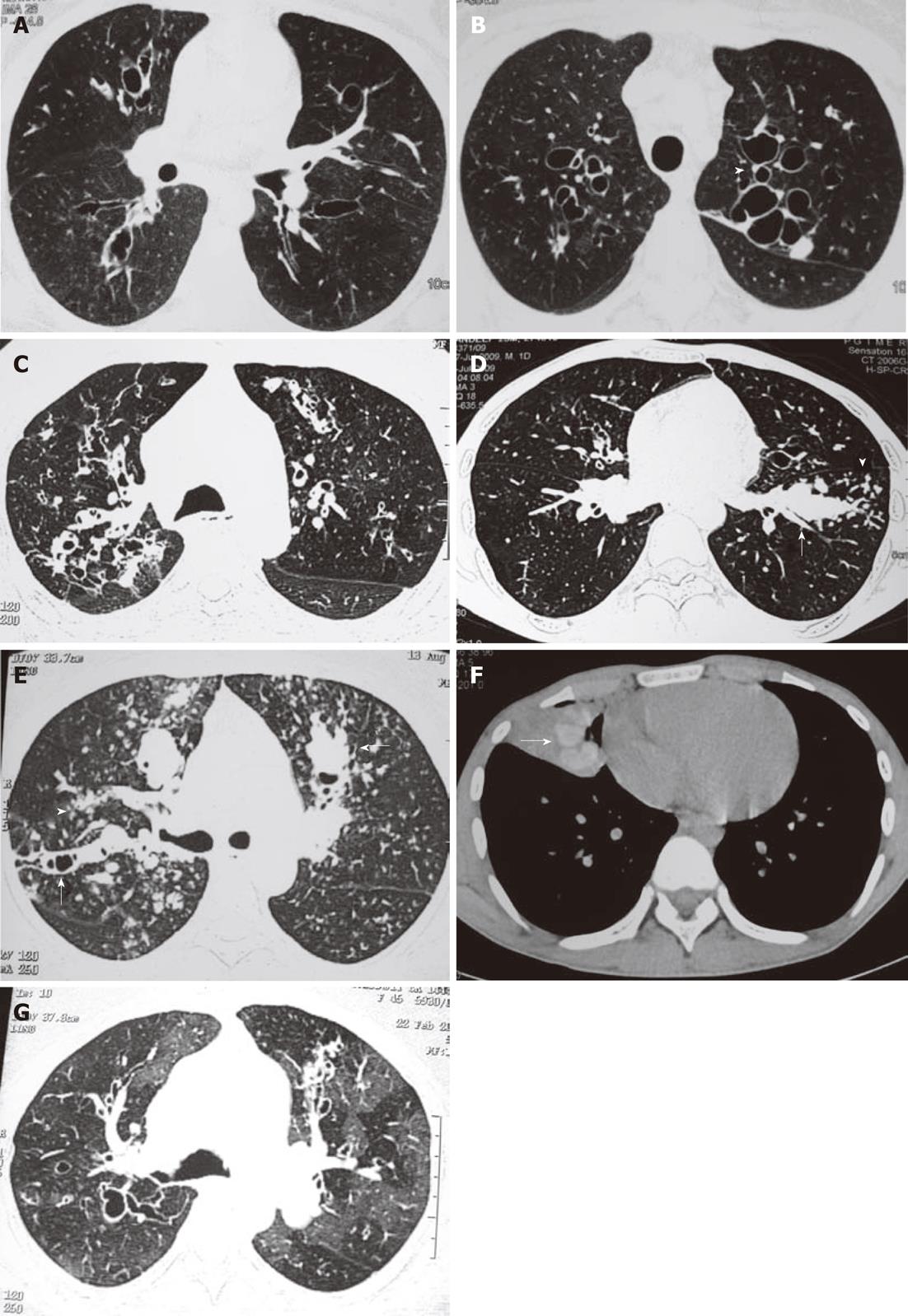Copyright
©2012 Baishideng Publishing Group Co.
World J Radiol. Apr 28, 2012; 4(4): 141-150
Published online Apr 28, 2012. doi: 10.4329/wjr.v4.i4.141
Published online Apr 28, 2012. doi: 10.4329/wjr.v4.i4.141
Figure 1 Chest radiograph showing ring opacities (arrows) and parallel line shadows (arrowhead).
Figure 2 Chest radiograph.
A, B: Chest radiograph (right panel) demonstrating consolidation in the left upper zone. Corresponding high resolution computed tomography of the chest (left panel) shows mucus-filled dilated bronchi; C, D: Chest radiograph (right panel) demonstrating consolidation in left upper zone. Computed tomography chest (left panel) shows typical consolidation with air bronchograms.
Figure 3 Chest radiograph.
A: Chest radiograph showing consolidation (arrow) and tram track opacities (arrowhead); B-D: Chest radiographs performed over time in a patient with allergic bronchopulmonary aspergillosis showing fleeting pulmonary opacities, and clearance after treatment. Arrowheads depict the fleeting opacities; E: Chest radiograph showing subsegmental collapse.
Figure 4 High resolution computed tomography chest scan.
A, B: High resolution computed tomography chest scan showing typical central bronchiectasis. The upper panel shows cylindrical bronchiectasis while the lower panel shows cystic bronchiectasis; C: High resolution computed tomography chest scan showing bronchiectasis extending to the periphery. Also seen are mosaic attenuation and centrilobular nodules; D, E: High resolution computed tomography chest scan demonstrating mucus plugging of dilated bronchi (arrows) with evidence of centrilobular nodules in a tree-in-bud fashion (arrowheads); G: High resolution computed tomography chest scan showing central bronchiectasis with extensive areas of mosaic attenuation.
- Citation: Agarwal R, Khan A, Garg M, Aggarwal AN, Gupta D. Chest radiographic and computed tomographic manifestations in allergic bronchopulmonary aspergillosis. World J Radiol 2012; 4(4): 141-150
- URL: https://www.wjgnet.com/1949-8470/full/v4/i4/141.htm
- DOI: https://dx.doi.org/10.4329/wjr.v4.i4.141












